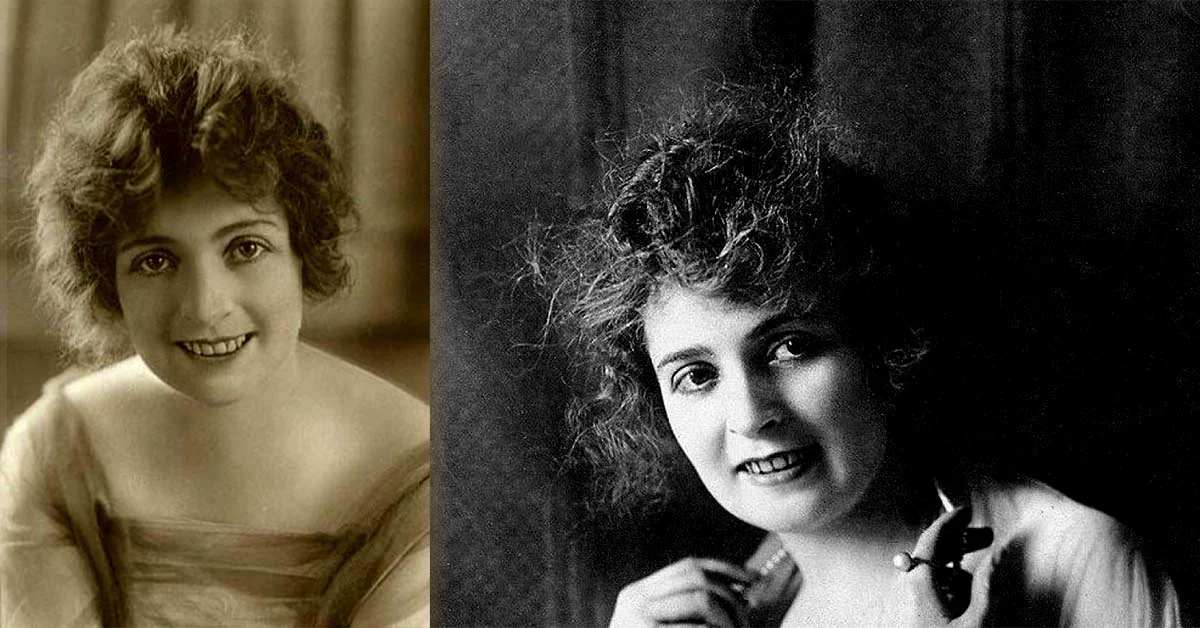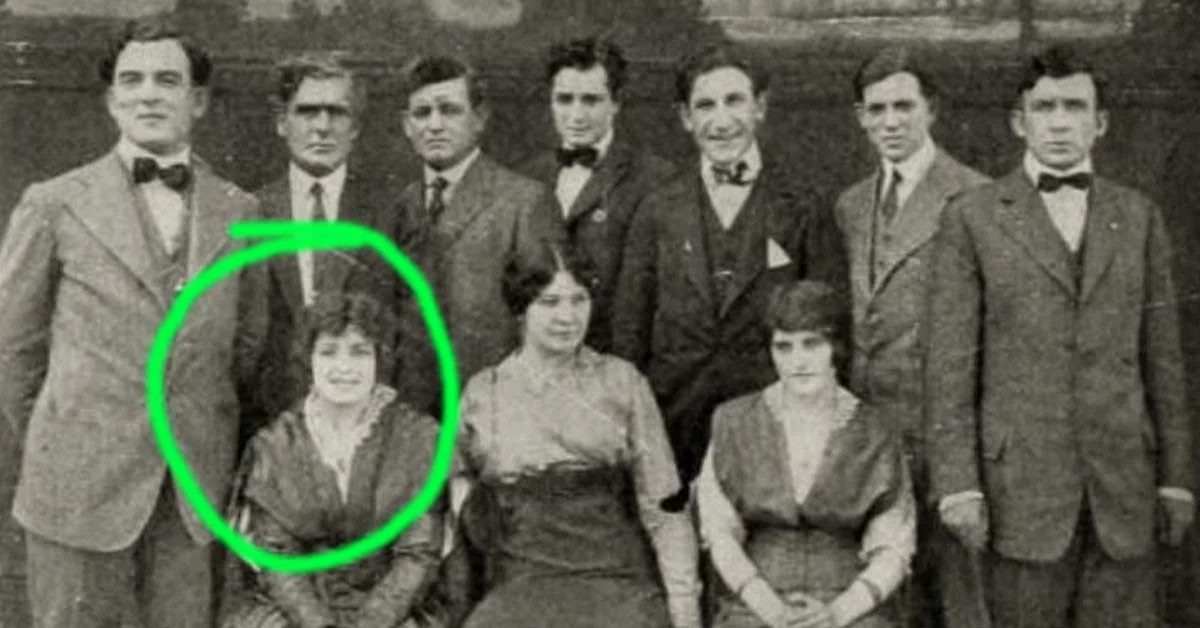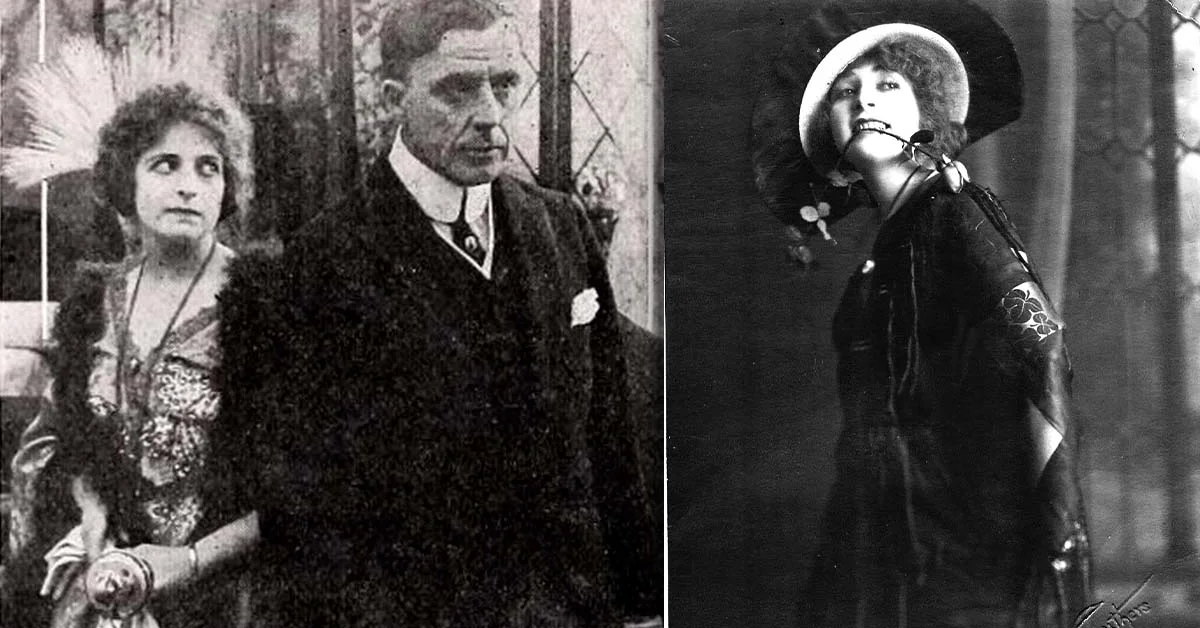Myrtle Gonzalez was known as the “First Latin American Movie Star,” had a remarkable journey in the early Hollywood days. She was born on 28 September 1891, in Los Angeles, California, to Mexican immigrant parents. And she passed away on October 22, 1918. In her life, Myrtle Gonzalez acted in at least 78 silent films from 1913 to 1917 and 66 of them were short movies.
The Life of Myrtle Gonzalez
Myrtle Gonzalez always loved performing, singing and dancing at local events from a young age. Director Thomas Ince discovered her talent while she was performing in a local theater production and at just 19 years old, she made her film debut in the silent western movie “The Invaders” (1912) which started her successful Hollywood career. The Myrtle Gonzalez went on to appear in films like “The Easter Lily” (1915), “The Serpent” (1916) and “One Law for Both” (1917).

Audiences were captivated by Myrtle’s beauty and charm, making her one of the most popular actresses of her time. She earned the nickname “La Única” or “the unique one” due to her vivacious personality and comedic timing.
Beyond her acting skills, Myrtle was a trailblazer for women in the film industry. In an era where female performers were often limited to stereotypical roles, Myrtle took on dynamic characters that challenged gender stereotypes.
Mrytle’s Early Life
Myrtle Gonzalez was the youngest of five children born to Mexican, Francisco Gonzalez and Maria Rodriguez.
Growing up in the lively city of Los Angeles, Myrtle experienced different cultures and languages. The Gonzalez lived in a mixed neighborhood where her parents spoke Spanish and she learned English from her friends at school.
At the age of 14, Myrtle’s life took a turn when she encountered a traveling vaudeville troupe that performed at her school. The stage captivated her, leading her to persuade her parents to let her join the troupe as an assistant. This marked the beginning of her passion for acting and she knew she wanted to pursue it as a career.
Myrtle Gonzalez Career
Myrtle honed her acting skills by performing in local theaters across Los Angeles. She also learned various dance styles like ballet and flamenco through dance lessons.
At the age of 20, Myrtle Gonzalez got her first film role in “The Immigrant,” directed by D.W. Griffith. Even though it was a small supporting role but it marked the start of her successful Hollywood career.
In the following years, Myrtle acted in many silent films, including “The Little American”.
Impact of Personal Life
Myrtle Gonzalez’s personal life and relationships played a big part in shaping who she was as both an actress and a person. Born to Mexican parents, her dad was a stage actor and her mom was a singer. It’s no surprise that Myrtle developed a love for performing from an early age.
Growing up, Myrtle was close to her family and often joined them during their performances. At just 16, she made her debut on stage and received positive reviews for her acting skills. However, it was when she entered the film industry that she gained widespread recognition.
When Myrtle Became Famous
As mentioned before about Myrtle Gonzalez, also known as “The Virgin of the Silver Screen” achieved fame as a Mexican-American actress in the early 1900s through her captivating performances in silent films. Despite starting with small roles and facing limited opportunities for Hispanic actors, Myrtle’s talent and determination propelled her to become one of the most sought-after actresses of her time.

In 1913, Myrtle made her cinematic debut in the short film “Giving Them Fits.” Though a minor role, it marked the beginning of a career spanning over two decades. Known for her expressive eyes and ability to convey emotions without words, she landed prominent roles in feature films like “Love’s Forgiveness” (1915) and “The Silent Witness” (1917).
Her breakthrough came when she starred alongside comedian Roscoe ‘Fatty’ Arbuckle in “Fatty’s Plucky Pup” (1915). The undeniable on-screen chemistry led to widespread recognition, solidifying Myrtle’s status as a celebrated actress.
Myrtle Gonzalez Marriage & Relations
In terms of romance, Myrtle had two marriages in her lifetime. She first married silent film director George Marshall in 1913. They stayed married for six years but eventually divorced due to personal differences. In 1929, Myrtle married again, this time to cinematographer Allen McNeil. They stayed together until his death in 1950.
Despite challenges in her love life, Myrtle kept a positive outlook and stayed dedicated to her career. She also formed strong friendships in the film industry, including with fellow actresses Dolores Del Rio and Ramona Novarro.
One aspect of Myrtle’s personal life that often caught media attention was her fashion sense. Known for her stylish and fashionable choices on and off screen, Myrtle became a bit of a fashion icon during the silent film era.
The Remarkable Works of Myrtle Gonzalez
Gonzalez had a remarkable career, starring in 80 films that kicked off with “The Yellow Streak.” At Vitagraph, she gained recognition for her work alongside William Desmond Taylor. Myrtle Gonzalez and Taylor teamed up for five movies in 1913 and 1914, including comedies like “Her Husband’s Friend” and “Millions for Defence,” and dramas such as “Tainted Money,” “The Kiss,” and “Captain Alvarez.”
One of Gonzalez’s well-known films, “The Level,” was released on November 23. After spending several years at Vitagraph, she moved to Universal Studios, taking on roles in features like “The Secret of the Swamp” and “The Girl of Lost Lake,” solidifying her status as an outdoorsy heroine.
Controversies About Myrtle Gonzalez
Celebrities often face controversies, and Myrtle Gonzalez, despite her successful hollywood career, faced the same.
Blaché & Myrtle
One of the most talked-about controversies involved her relationship with director Herbert Blaché. At that time, Blaché was married to Alice Guy-Blaché, a cinema pioneer. However, he had an affair with Myrtle, leading to his divorce from Alice in 1922. This scandal created a major buzz in Hollywood and affected both Blaché’s and Myrtle’s reputations.
Mexican American
Another ongoing controversy in Myrtle Gonzalez’s career was about her Mexican heritage. Even though she was born in Los Angeles with Spanish ancestors, she frequently encountered discrimination based on her appearance and last name. In a time when Mexican Americans faced challenges in Hollywood, Myrtle struggled against stereotypical roles like “the exotic temptress” or “the fiery Latina.”
Co-Stars
Additionally, rumors circulated about Myrtle’s love life. Known for being flirtatious on set, she was romantically linked with several co-stars.

One of the rumored relationships involved actor Francis X. Bushman, one of Hollywood’s biggest stars at the time. While never confirmed, their alleged romance stirred scandal, especially as Bushman was married during that period.
Awards & Remembrance of Myrtle Gonzalez
Despite her short but successful career in Hollywood, Myrtle left a lasting impression on the film industry, opening doors for future Latino actors.
Posthumous Awards
Even after her early death at 27, Myrtle Gonzalez’s talent was acknowledged.
- In 1919, Photoplay Magazine awarded her a Bronze Plaque for her role in “The Mexican,” recognized as one of her best performances.
- In 1920, Alma de Mexico magazine gave her an honorary award for being “the most beautiful woman in Mexico.”
These awards show how Myrtle left a lasting impact on both American and Latin American audiences.
Hollywood Fame
In 1960, Myrtle Gonzalez received a star on the Hollywood Walk of Fame. This is a top honor for actors who have made significant contributions to the entertainment industry. It’s a way of permanently recognizing her achievements and influence in Hollywood.
Google Doodle for Gonzalez
On 23 November, 2022, Google released a Doodle to honor Myrtle Gonzalez’s impact on cinema, marking the 108th anniversary of the release of one of her most famous films, “The Level,” in 1914. The Doodle shows Gonzalez during a common location shoot for her movies—standing in three feet of snow in the forest. It was a tribute to her memorable contributions to the film industry.
Final Words
Despite facing controversies and challenges, Myrtle Gonzalez’s legacy lives on as a trailblazer, fashion icon and celebrated actress. Her story continues to inspire and pave the way for future generations, reminding us that talent knows no boundaries and the unique ones, like Myrtle, leave an everlasting imprint on the cinematic landscape.
FAQ’s
Myrtle Gonzalez passed away on November 22, 1918, at the age of 27.
Some of Myrtle Gonzalez’s notable movies include “The Invaders” (1912), “The Chalice of Courage” (1915), “The Little American” (1917) and “Fatty’s Plucky Pup” (1915).
Myrtle Gonzalez died during the worldwide Spanish flu pandemic of 1918. The flu was the reason for her untimely passing at the age of 27.









